Curcuma longa, turmeric in English and haridra in Sanskrit (meaning the special bond with the divine Lord) has been honored for centuries as both a medicine and food, and has recently surged in popularity within the alternative health and holistic nutrition communities in the West.
How it grows
The turmeric plant grows to about three feet in height and produces both a flower and a rhizome, a horizontal stem that grows underground. India has been growing it since ancient times and is currently the largest producer together with other countries like China, Pakistan, Jamaica, Peru, Thailand and Taiwan.
Health Benefits
This is thanks to “curcumin”, a compound found in turmeric which is a healing substance known to have the following health benefits:
• Promotes skin health
• Regulates blood sugar
• Reduces internal inflammation
• Balances cholesterol
• Boosts brain function
• Enhances detoxification
A rich history
Turmeric may be the latest superfood but it has been embedded in Indian culture for thousands of years and it still plays a prominent role in the country’s cuisines, Ayurvedic medicines, and in many Hindu traditional rituals. There is no other spice so diverse in its use.
Because of its yellow-orange coloring, turmeric was associated with the Sun in Hindu mythology and recognized as sacred and auspicious. It is the color of the solar plexus chakra, which is considered the energy center of the body relating to the metabolic and digestive systems.
The spice has even been used in Indian textiles: The robes of the Hindu monks, for example, were traditionally colored with a natural yellow dye made from turmeric.
easy everyday uses
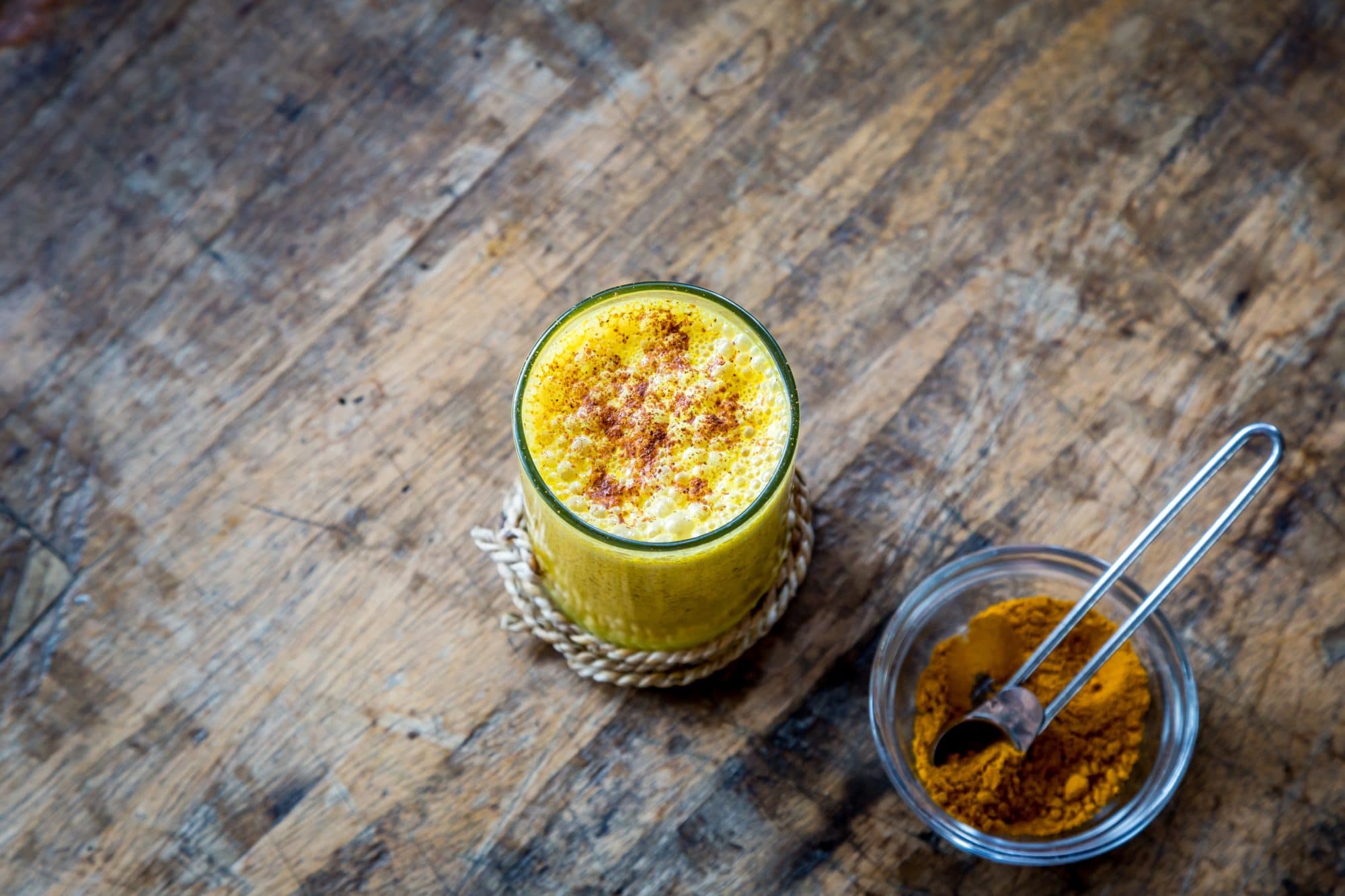
Almost all Indian dishes have turmeric but did you know that it’s been used to add yellow into American cheese, prepared mustard, butter, yellow cake mix, pickles, popcorn and other products?
These days, turmeric’s claim to fame is Golden Milk. But I love using the spice in so many other dishes:
- Add a pinch to your salad dressing
- Create a refreshing turmeric-honey lemonade
- Boost your bone broth with a hint of turmeric
- The golden milk can enrich your breakfast oatmeal
- Add a pinch to green juices and smoothies
- Spice up your grains
- Roasted vegetables can get a splash of color
- Marinades take to the spice well, too!
Used in ritual
Some Indian wedding traditions have several rituals that honor the spice. There’s one in which a string is dyed yellow with turmeric paste and the groom ties this around the bride’s neck. The necklace is called a Mangal Sutra and indicates that the woman is married. The necklace is also made in silver and gold for the married woman to wear it always.
The Haldi Ceremony
My favorite ritual showcasing this spice is a pre-wedding celebration called the Haldi ceremony. In different regions and communities it is also known by other names – Gaye Halud, Tel Baan, Halad Chadawat , Manjha and Pithi.
The Haldi ceremony is typically held the day before or on the morning of the wedding. Close family and friends gather at the homes of both the groom and bride respectively.
Uptan Paste
A simple, special paste called Uptan or Ubtan is made using turmeric powder, sandalwood powder, Bengal Gram flour and rosewater. Sometimes milk or yogurt is used – the recipe is often adapted by individual family members or local communities.
The gathered family and friends apply the paste on the bride-to-be and groom’s face, neck, hands, arms, legs and feet. The bride and groom also smear a tiny bit of paste on their unmarried friends and siblings.
Just like the throwing of the bouquet, it is said that whoever gets touched by this sacred paste will soon find their own beloved partners.
The reason behind the ceremony
There are several important reasons for this particular ceremony:
- The turmeric application helps to ward off evil spirits and protect the bride and groom from any bad omens that might harm them as a couple. This is also why the bride and groom are usually not allowed to leave their home until the actual wedding ceremony.
- The yellow color is considered very auspicious and sacred as the Sun energy signifies purification of the heart and body. For the bride, it serves as a reminder of the goddess within her. There is a symbolic cleansing of the past when the paste is washed off. This marks the beginning of a new life together as a couple.
- Ancient texts (and even modern studies) state that this golden spice has powerful antioxidant, anti inflammatory and antiseptic properties that help cleanse the body. The application of the turmeric paste helps in removing the dead skin cells and revealing the youthful and rejuvenated skin. Think of it like a spa day before the grand celebration.
- The active compound curcumin is known to act as a natural remedy for anxiety and headaches. This helps to soothe the bride and groom’s nerves and to relax before the big day.
- Turmeric is a symbol of blessing for the couple to, as Spock would say, “live long and prosper.” According to Hindu customs, all the married ladies of the house apply the paste to the bride and the groom and bless them with a long and strong relationship, good health and many children. The ritual is accompanied by music, singing, dancing and of course, lots of good food.
Here is a simple uptan recipe—
The Uptan:
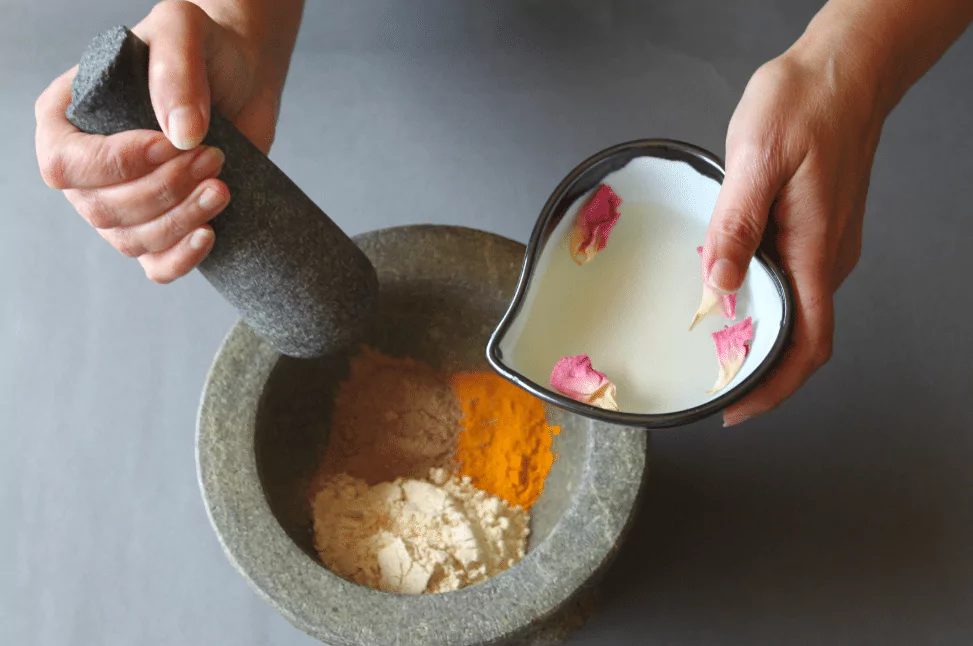
This recipe will make a generous amount for the bride or groom.
Ingredients
• ⅓ cup sandalwood powder
• ⅓ cup turmeric powder
• 1 cup Gram flour ( known as besan at the South asian market)
• 1 ½ cups or more rosewater
Directions
Mix all the ingredients together until it forms a smooth paste (you may want to add a bit more or less rosewater, depending on how the paste forms). The paste can be made 1-2 hours before use. Keep it covered so that it does not dry up (and if it does, just add a bit more rosewater). Once applied to the body make sure you wash off within 15-20 minutes, otherwise your skin will stain!
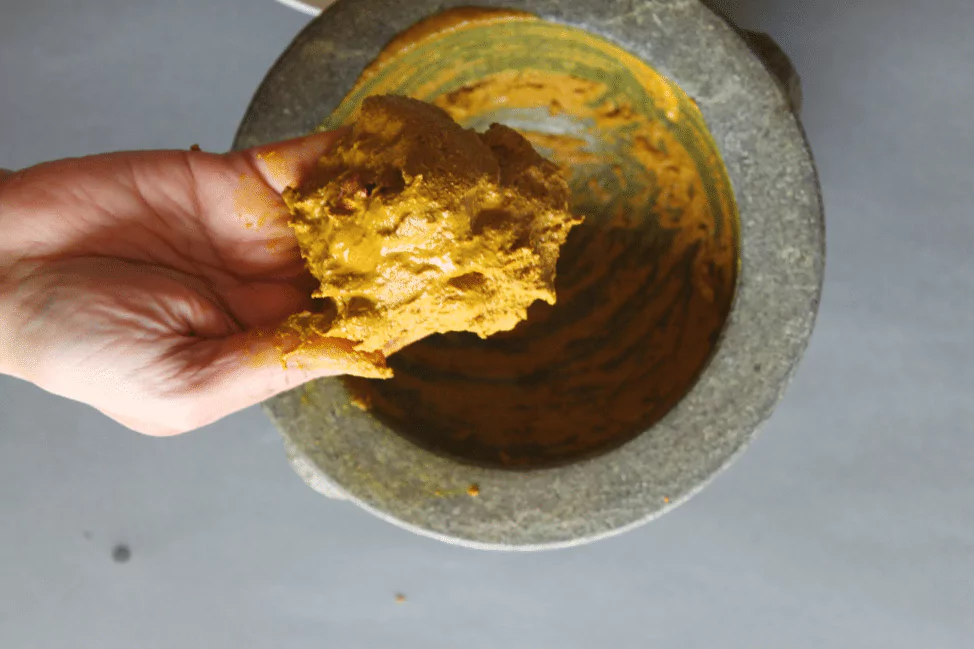
A word of caution:
The spice will impart its yellow color to every dish that you add it to (not to mention your hands and body). Follow my grandma’s rule: add just enough to see it but not taste it!
This post was contributed by our friend Vinita Jacinto.
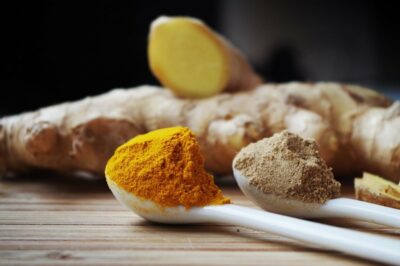
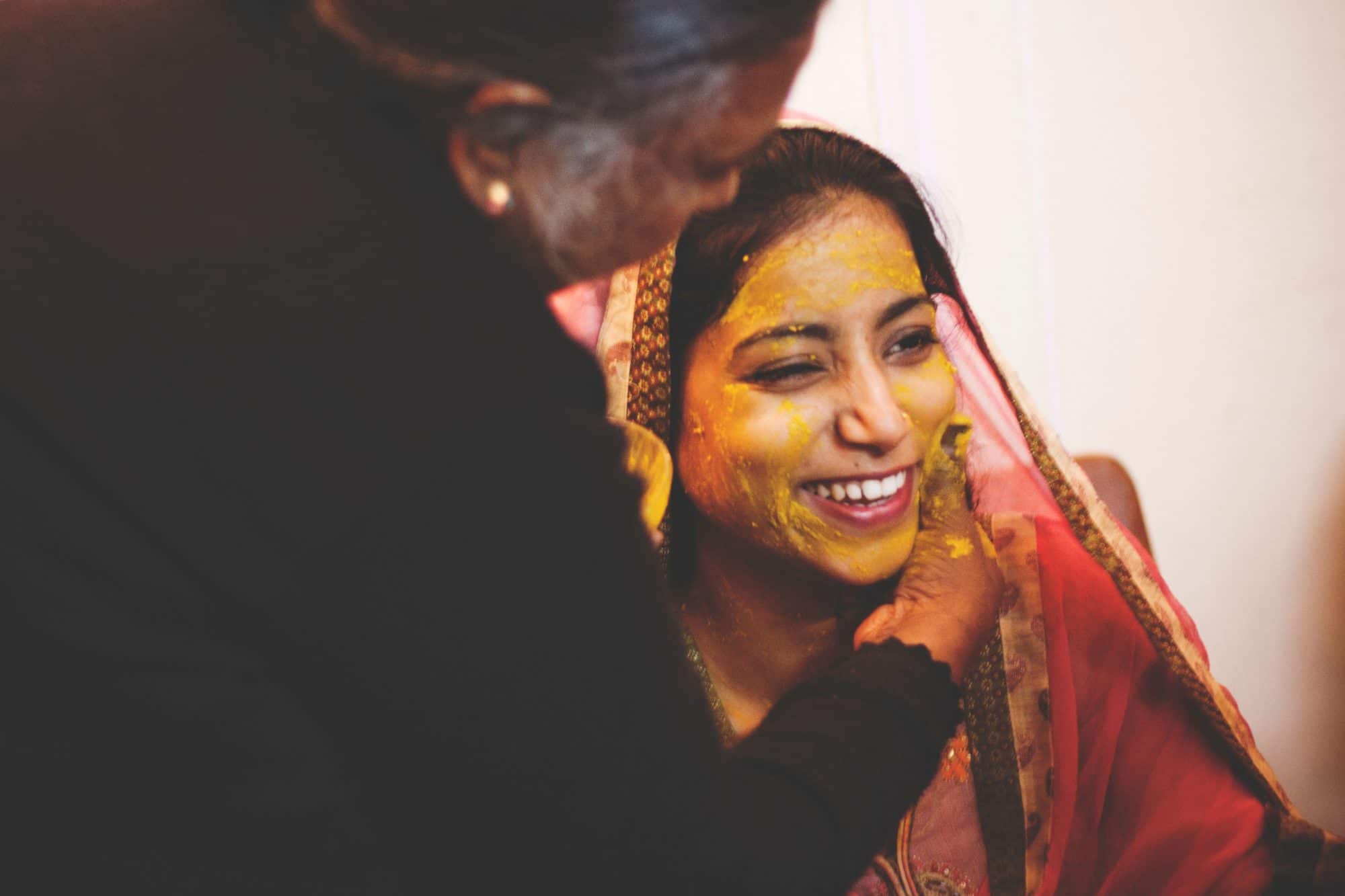

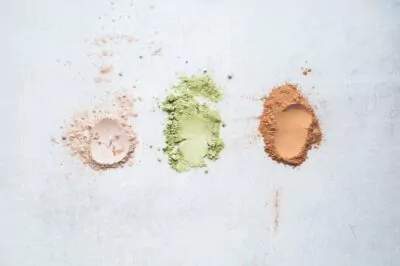

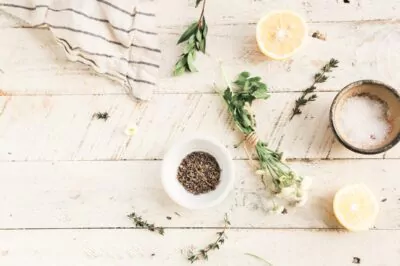
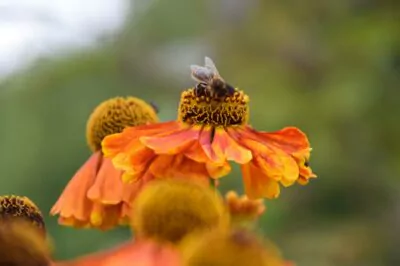

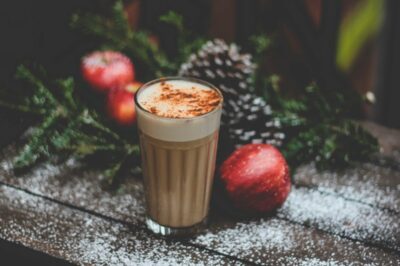
Do you use turmeric in your cooking? What are some other unique ways you use the spice? Please share in the comments!